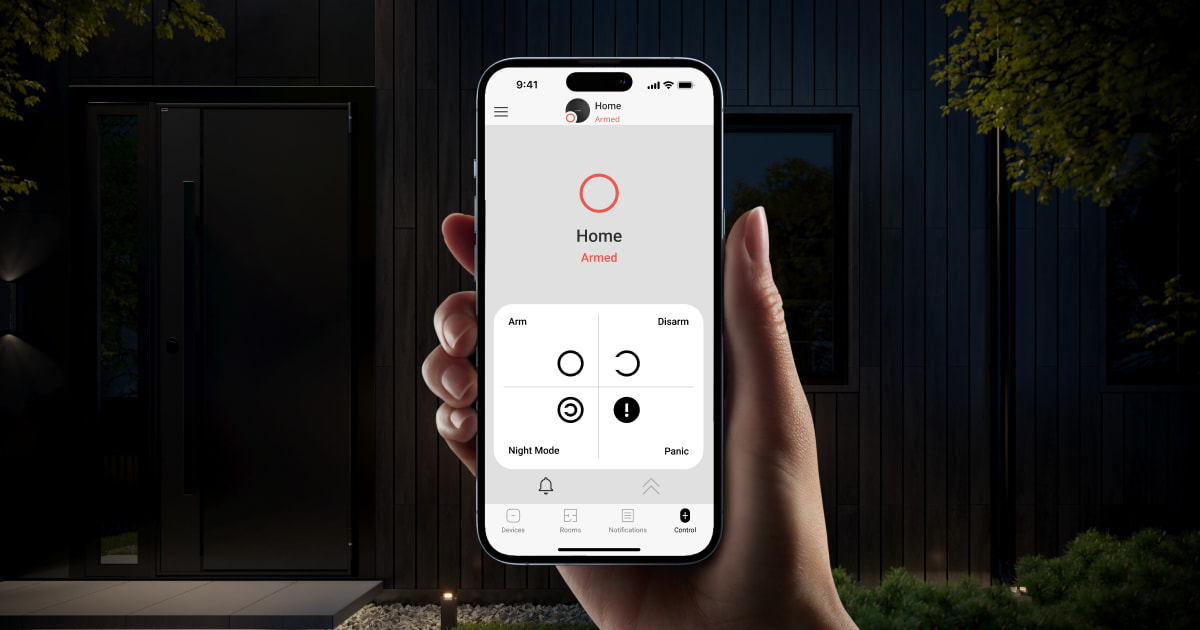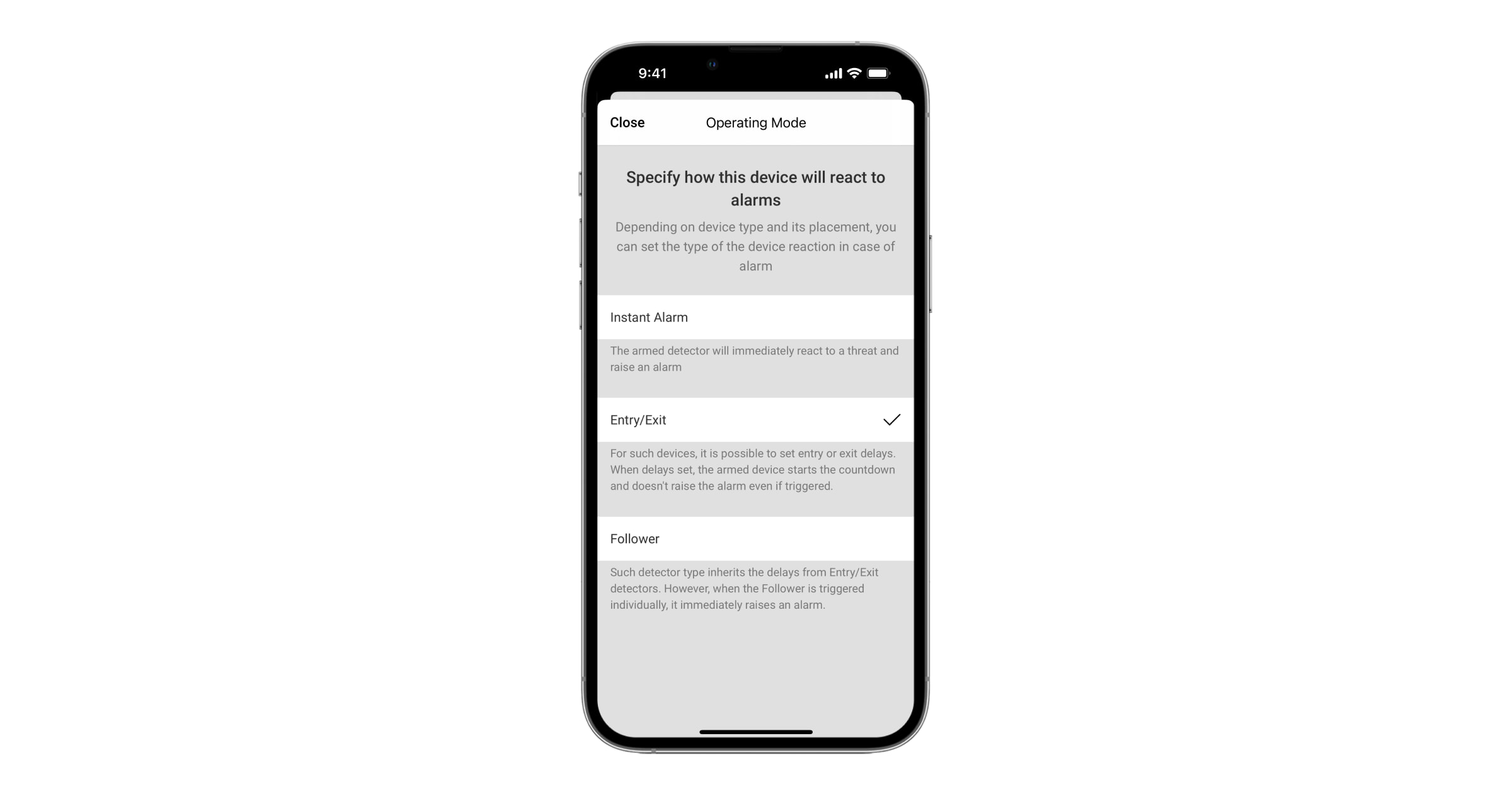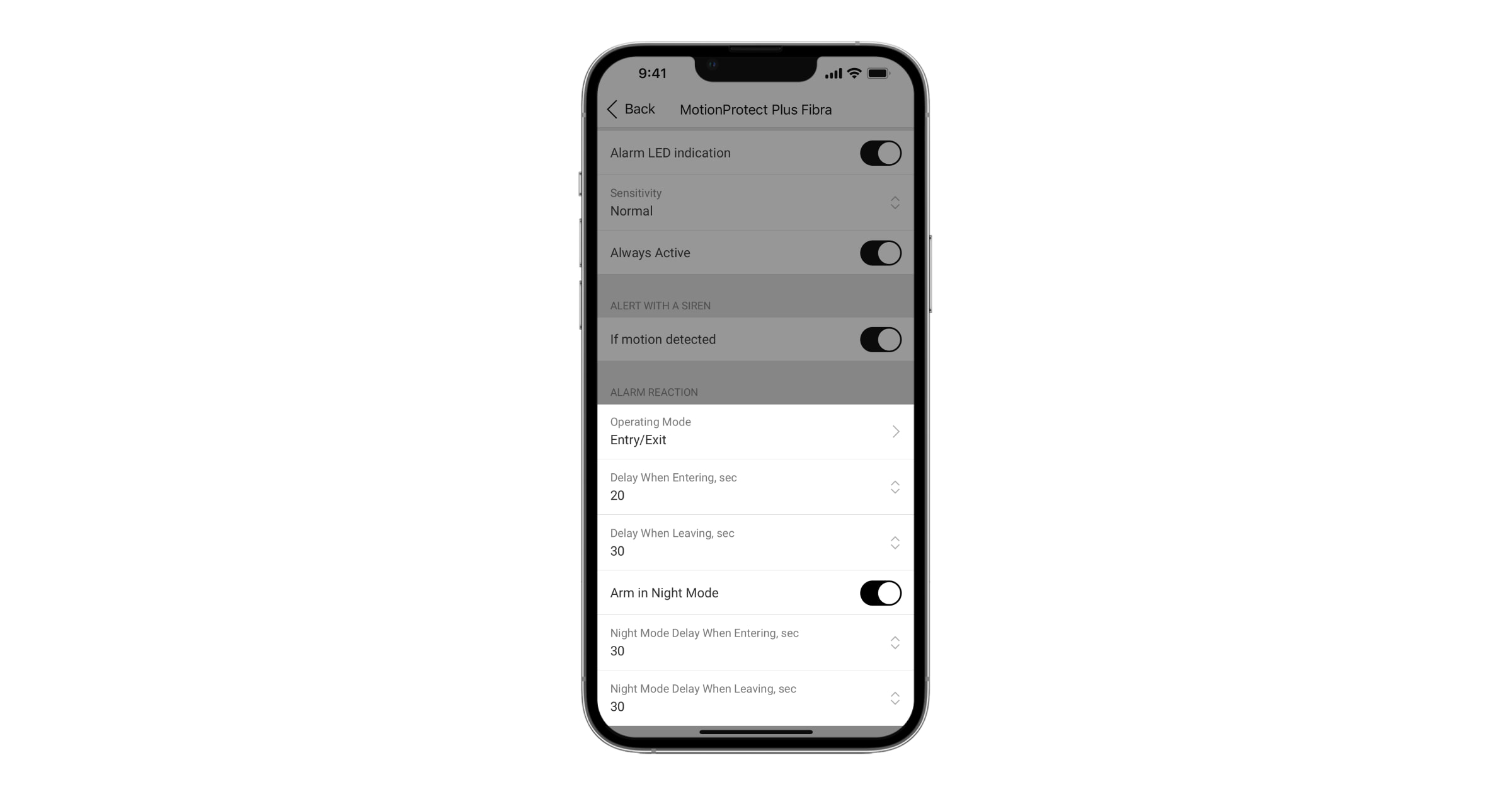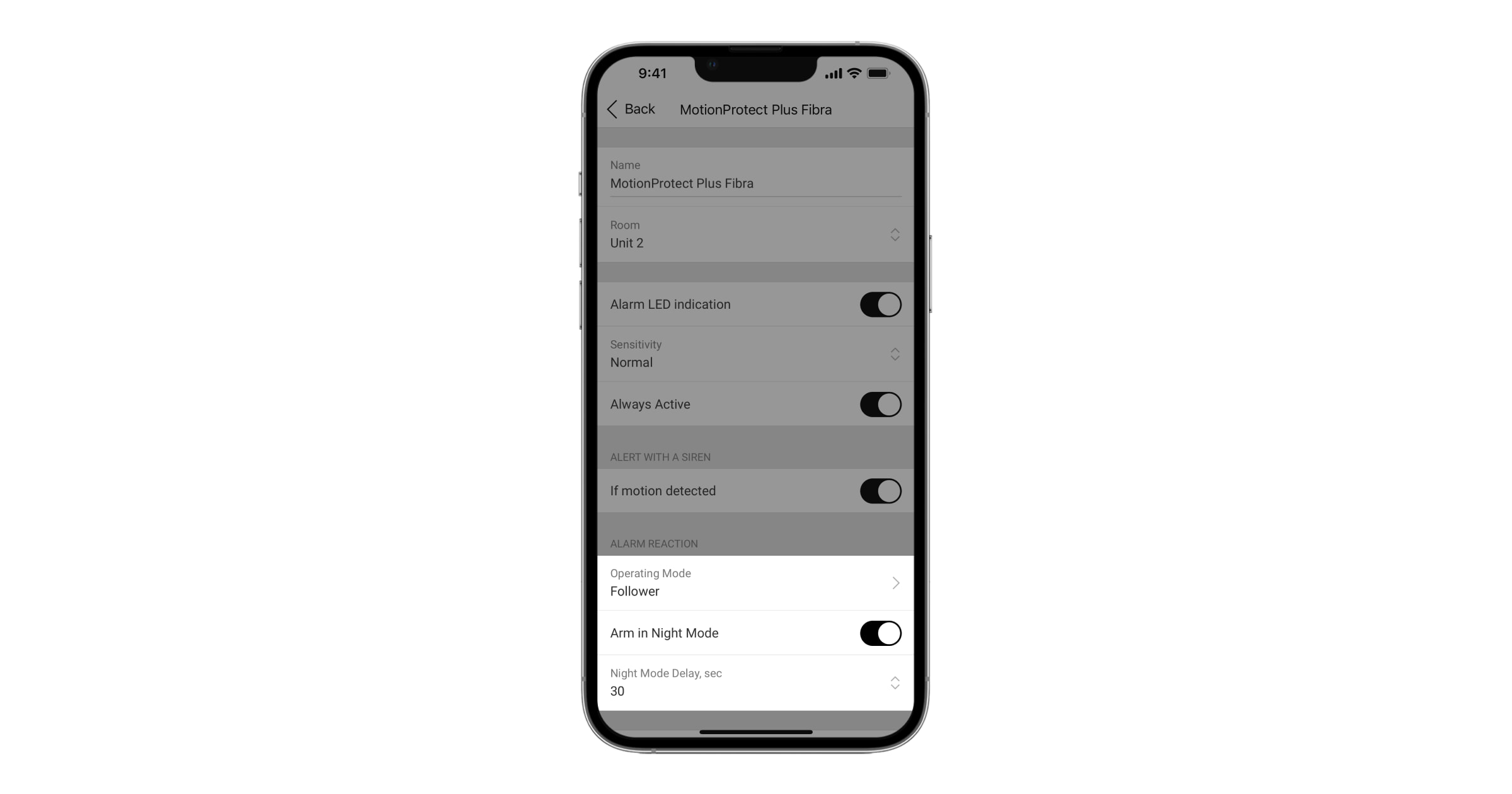Задержка на вход (задержка включения тревоги) — это время, которое у вас есть на отключение режима охраны системы после входа в помещение.
Задержка на выход (задержка включения тревоги) — это время, которое у вас есть на выход из помещения после включения режима охраны.
Задержки на вход и выход настраиваются только для охранных устройств. Они реагируют на тревогу в одном из трех режимов:
- Мгновенная тревога;
- Вход/Выход;
- Дублирующий.
Настроить режимы работы можно при подключении ко всем хабам с прошивкой OS Malevich 2.16 или более поздней версией.
Режимы работы Вход/Выход и Дублирующий позволяют установить задержки на вход и выход.
Режимы работы датчиков
Мгновенная тревога
Охраняемое устройство поднимет тревогу, как только зафиксирует вторжение. Этот режим работы предназначен для устройств, которые не сработают при входе/выходе людей с объекта, когда они устанавливают/снимают его с охраны.
Вход/Выход
Если установлена задержка, устройство под охраной запускает обратный отсчет и не поднимает тревогу до его завершения. Этот режим работы предназначен для устройств, контролирующих точку входа на объект и точку выхода с охраняемого объекта.
Режим работы Вход/Выход позволяет установить задержку.
Как работает задержка на вход:
- Вы входите в охраняемое помещение.
- Датчик в режиме Вход/Выход регистрирует тревогу и включает обратный отсчет времени, за которое нужно выключить режим охраны. В течение этого времени дублирующие датчики также не будут поднимать тревогу.
- Если по окончании обратного отсчета режим охраны не выключен, активируется тревога.
Как работает задержка на выход:
- Вы устанавливаете систему под охрану.
- Хаб включает обратный отсчет времени, в течение которого система игнорирует все тревоги датчиков в режимах Вход/Выход и Дублирующий. Датчик в режиме Мгновенная тревога, находящийся под охраной, сработает в случае вторжения.
- Когда время задержки завершилось, датчики переходят в режим охраны. С началом задержки на выход все датчики становятся под охрану, но хаб игнорирует срабатывание датчиков в режимах Вход/Выход и Дублирующий.
Если вы не успели выйти с охраняемого объекта до завершения времени задержки на выход или ушли в ту зону, где датчики работают в режиме Мгновенная тревога, сработают датчики, включится тревога, и вы получите оповещение в приложении Ajax. Например, если вы закроете входную дверь после окончания задержки на выход. Учитывайте, что такое событие не поднимает тревогу, но вы получите соответствующее уведомление в приложении Ajax.
Срабатывание датчика (в частности, закрытие двери, на которой установили DoorProtect) после окончания задержки на выход запускает задержку на вход. Это означает, что после возвращения на охраняемый объект время задержки на вход уже завершилось. Если вы не снимете систему с охраны, мгновенно активируется тревога.
Чтобы избежать ложных срабатываний после окончания задержки на выход, увеличьте время задержки или используйте постановку под охрану в два этапа.
Дублирующий
Устройство дублирует задержки от устройств типа Вход/Выход. Но если дублирующее устройство самостоятельно зафиксирует вторжение, оно сразу активирует тревогу. Этот режим работы предназначен для устройств, установленных в зоне пути следования пользователя от точки входа до клавиатуры, где он снимет систему с охраны.
Задержки на вход/выход можно настроить для устройств в режиме работы Дублирующий, если включена опция Охранять в ночном режиме.
Если задержка на вход/выход не установлена, датчик в Ночном режиме будет работать как Дублирующий, если установлена — в режиме Вход/Выход. Во время отсчета задержки устройство не сработает по тревоге. Если задержка не установлена, он оповестит в случае тревоги.
Какой режим работы выбрать
Задержки удобно использовать, если вы управляете системой через клавиатуру, установленную внутри помещения.
Задержка — это потенциальная уязвимость, поскольку дает дополнительное время злоумышленникам в случае проникновения на охраняемый объект. Если вы хотите, чтобы тревога передавалась мгновенно, не используйте задержки на вход или настройте датчики как дублирующие.
Устройство в режиме работы Дублирующий не имеет собственной задержки на вход/выход. Он дублирует задержку от датчика в режиме работы Вход/Выход, но в случае вторжения мгновенно оповещает о тревоге. Например, пользователь идет от двери к клавиатуре, а злоумышленник в это время проникает в помещение через окно. Устройство с задержкой в режиме работы Вход/Выход не сработает, а дублирующий датчик на окне сработает и оповестит о тревоге.
Если у вас есть сирена, она может пищать — оповещать звуком об обратном отсчете задержек.
Чтобы сирены сообщали о задержках на вход/выход, в приложениях Ajax:
- Выберите нужный хаб, если у вас их несколько или вы используете PRO-приложение.
- Перейдите во вкладку Устройства
.
- Выберите нужную сирену.
- Перейдите к ее настройкам, нажав на иконку шестеренки
в правом верхнем углу.
- Перейдите в меню Настройки оповещений.
- Укажите нужные параметры в меню Оповещение о задержках:
- На вход;
- На выход;
- На вход в Ночном режиме;
- На выход в Ночном режиме.
- Нажмите Назад, чтобы сохранить настройки.
Как настроить задержки в системе Ajax
Чтобы задать задержку на вход/выход, в приложениях Ajax:
- Выберите нужный хаб, если у вас их несколько или вы используете PRO-приложение.
- Перейдите во вкладку Устройства
.
- Выберите необходимое устройство или датчик, на котором хотите установить задержку тревоги.
- Перейдите к его настройкам, нажав на иконку шестеренки
в правом верхнем углу.
- Выберите режим работы Вход/Выход.
- Укажите нужные параметры в полях:
- Задержка на вход;
- Задержка на выход;
- Задержка на вход в Ночном режиме (если включена опция Охранять в ночном режиме);
- Задержка на выход в Ночном режиме (если включена опция Охранять в ночном режиме).
- Нажмите Назад, чтобы сохранить настройки.
Учитывайте, что задержки поддерживают только датчики движения и открытия, а также модули интеграции. Пожарные датчики, датчики разбития и протечки не поддерживают эту функцию.



